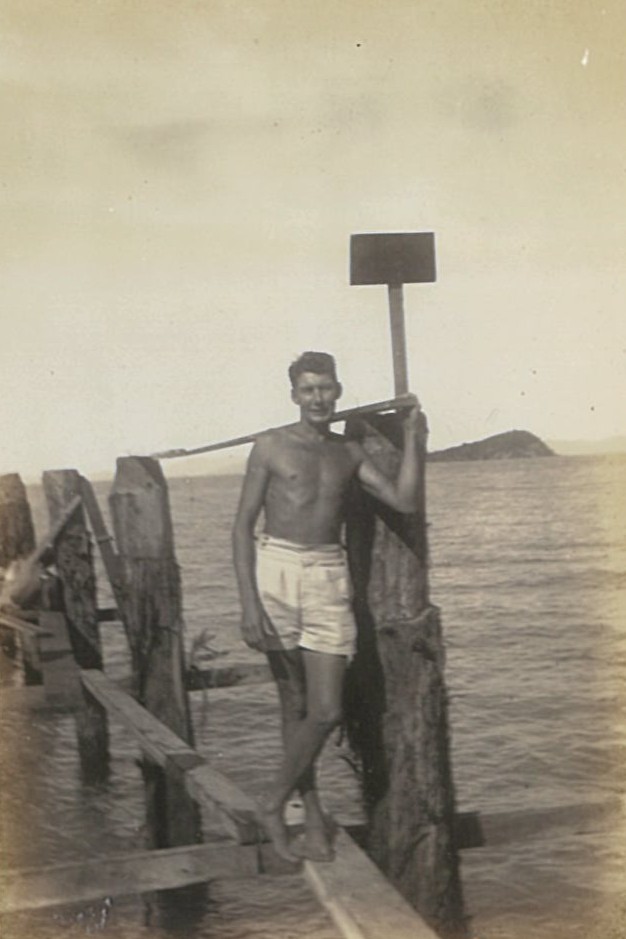


I came up to North Queensland after the war where I met an old sailor in Mackay who asked, “Why don’t you come and get a job on the boats on Hayman.” It was when Ansett had just bought the island … so there was a lot of construction to be done and materials to be transported.
When I arrived, accommodation was in tents with fly sheets and floorboards in rows for all the workers. There was a ranch house where the meals were served.
It was a great time to work there … a good life, free and easy, just what was needed after the war. You could come and go as you liked, go fishing for two or three days and then go back to a job. George Bailey, a carpenter on Hayman, built himself a little fourteen-footer and on occasion would tell Bill Ponchoy, the foreman, “The weather’s too good to be working.” So, they would take four days to sail down to Lindeman and back. Then start work again. I sailed on the ‘Sea Prince’ which won the first and second Brisbane to Gladstone Yacht Races. … We were away for about a month but came back and walked straight into a job.
We would be three to four weeks on shore digging drains, putting in windows and the like and then three to four weeks on the barges bringing in the materials. It was well before Shute Harbour was built and the trucks would go on to the beach at Shingley carrying the stuff which we would load up on the barges. All of which was done by hand. There were no forklifts in those days.
Annie Lewis ran the old store at Cannonvale Beach at the time. She would watch for the barge coming into Shingley and by the time the boys had walked over she would have a meal waiting for them. She would call them ‘her barge boys’. Sometimes, she would even go and pick oysters for them.
Transport from the Flying Boat to the hotel
Before the Shute Harbour jetty was built, guests would come in on Catalinas and Sunderlands and land outside the reef where the water was not always flat calm. The dinghies had to get under the wing of the Catalina to get people out of the door and into the boat. They had to hang onto the open door … with the swell taking them up and down. As the boat came up level, you’d shout, “Right oh then jump.” Invariably the women would hesitate. They came up from Sydney all dressed up with high heels. One of them had a fur coat. She stepped straight into the sea in between the boat and plane. We hauled her out like a drowned rat … There were no life jackets. Then they would have to climb out of the dinghy … into the four-wheel drives to get ashore. If it was raining, we had an old tarpaulin that had been used to cover a cement truck.
There were lots of whales … which caused difficulty when the Catalinas took off. Sometimes a whale would emerge just in front as the plane went to take off. You had to try and shoo them off or you would hear the engine scream as the plane tried to back off. On the motor boat from Shingley, you would have to look out for whales. The boats wouldn’t hurt the whales but they could knock a hole in the boat. Once a thirty-footer was sunk by a whale.
In all they were good times, with lots of fun and not too many regulations.
Story and photos courtesy of the late Jack Tyree (25/12/1916 – 20/03/ 2017)
Jack Tyree at Hayman Jetty. Photo supplied.
Catalinas were used to transfer people to the islands of Hayman and Daydream. Photo supplied.